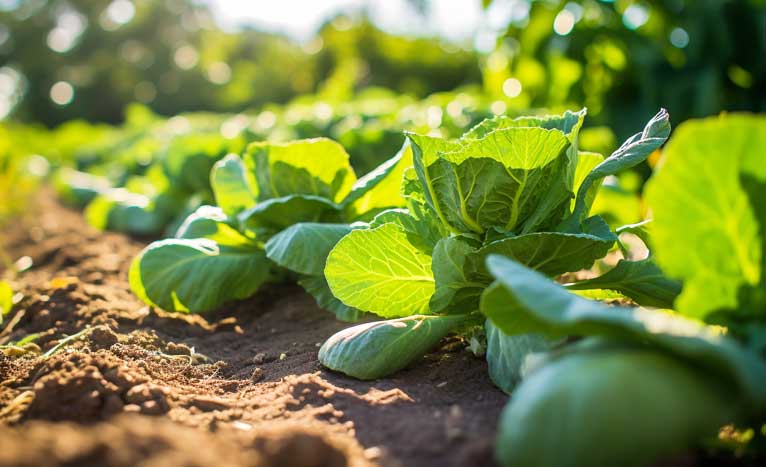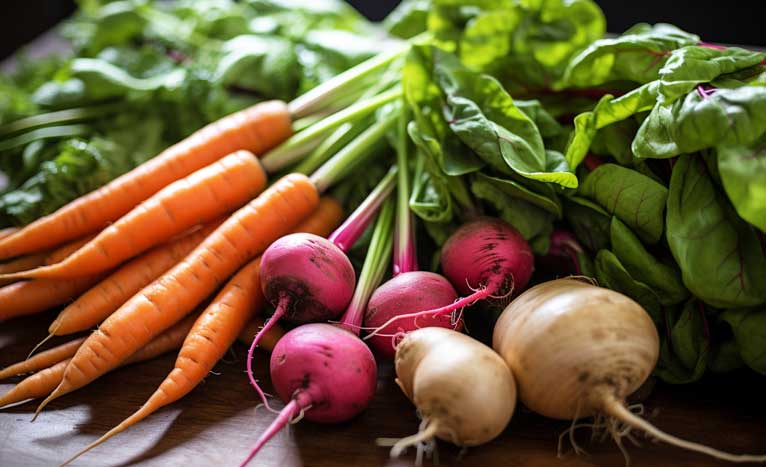What is a survival garden?
In today's uncertain times, having a survival garden is a smart and practical choice. A survival garden is a plot of land or even a small container garden that is specifically designed to provide you with essential food crops to sustain yourself and your family during emergencies or times of scarcity. By growing your own food, you ensure a constant supply of fresh, nutritious produce that can help you become more self-reliant.
I still remember walking down the aisles of the local grocery store in 2020. The shelves were barren, people were fighting over bags of beans, and the freezers were empty. I wondered how I found myself if this situation depending on an outside source for food. I realized we lost our power by depending on these broken systems and not relying on ourselves to grow and cultivate our own gardens!
Growing a survival garden not only offers food security but also provides a rewarding and empowering experience. It allows you to take control of your food source and reduce dependence on external factors.
Whether you have a large backyard or a small balcony, you can create a survival garden that meets your needs and circumstances. Let's explore the essential crops to include in your survival garden and learn why they are valuable assets for self-sustainability.

Why You Should Grow a Survival Garden
Ensuring Food Security
In our tumultuous times, having a reliable source of food becomes crucial. Supermarket shelves may be empty, and supply chains may be disrupted. By cultivating a survival garden, you take proactive steps to ensure food security for yourself and your loved ones. Having a readily available supply of fresh produce right outside your door can provide immense peace of mind and stability during challenging times. Growing a garden allows you to pass on survival skills to your children as well!
Self-Sustainability and Cost-Effectiveness
Growing your own food not only makes you less reliant on external food systems but also offers long-term cost savings. Supermarket prices can fluctuate, and the cost of fresh produce can add up over time. As we are seeing right now, the cost of goods is skyrocketing! They have been artificially low for a long time and with inflation kicking in, it is becoming more difficult to survive on our old systems. With a survival garden, you can reduce your grocery bills and have the satisfaction of producing your own food. Additionally, you have control over the cultivation methods, allowing you to grow organic and pesticide-free crops if desired.
Nutritional Benefits
Commercially produced fruits and vegetables often go through extended transportation and storage periods, which can result in nutrient loss. By growing your own crops, you have access to fresh, nutrient-dense produce that is harvested at its peak. This ensures maximum flavor and nutritional value. Eating fresh, homegrown fruits and vegetables can significantly enhance your overall health and well-being.
Did you know that eating local food grown in your surrounding area is also beneficial for your gut microbiome? Skip the grocery store preservative junk, and learn to grow a survival garden!

The Essential Crops for a Survival Garden
Rhubarb
Rhubarb is an excellent addition to a survival garden due to its resilience and multiple culinary uses. This perennial plant thrives in cooler climates and requires minimal care. The tart stalks of rhubarb are rich in vitamin C, dietary fiber, and antioxidants. They can be harvested and enjoyed in various dishes, from pies and jams to sauces and beverages. This is a great crow to create desserts and treats from. In dire times, I don’t want to just survive, I want to thrive. Having crops that allow me to create tasty desserts and jams from is important, especially if you have little ones.
Take the next step: Read my post on how to grow rhubarb and start cultivating this versatile crop in your survival garden!
Carrots
Carrots are a staple in any survival garden. These versatile root vegetables are easy to grow and store well. They are packed with beta-carotene, which the body converts into vitamin A, essential for good vision, immune function, and healthy skin.
Carrots come in different colors and varieties, allowing you to add variety to your garden and plate. You can add carrots to your food storage by canning them, freeze-drying, dehydrating, or freezing them! Because they are so easy to grow and store, it makes them a wonderful addition to a survival garden.
Take the next step: Read my post on how to grow carrots and start growing this nutritious and vibrant vegetable in your survival garden!
Spinach
Spinach is a nutrient powerhouse and an excellent choice for a survival garden. This leafy green vegetable is rich in iron, calcium, vitamins A and C, and other essential nutrients. It is also one of the easiest and fastest-growing greens.
Regularly harvesting spinach leaves promotes continuous growth and provides a fresh supply for salads, smoothies, or cooked dishes. Having a salad garden be a part of your survival garden is important so then you can have ready-to-eat meals from your garden.
Take the next step: Read my post on how to grow spinach and start cultivating this nutritious green in your survival garden!
Garlic
Garlic is a versatile crop that offers both culinary and medicinal benefits. It has been used for centuries for its unique flavor and numerous health-promoting properties. Growing garlic in your survival garden ensures a ready supply of this flavorful bulb. Garlic has natural antimicrobial properties and is rich in antioxidants, which can support your immune system and overall well-being. Garlic is so easy to grow, there is no reason not to grow it.
Take the next step: Read my post on how to grow garlic and learn the secrets to cultivating your own fresh and flavorful garlic in your survival garden!
Potatoes
Potatoes are a reliable source of calories and a valuable staple crop. They provide sustenance during times of scarcity and are incredibly versatile in the kitchen. Potatoes are relatively easy to grow and can be cultivated in various climates. They store well and can be a long-lasting food source. With different varieties available, you can choose from a range of textures and flavors to suit your preferences. Potatoes provide an incredible bang for your buck with their harvest yield and time input.
Take the next step: Read my post on how to grow potatoes and start cultivating this versatile and filling crop in your survival garden!
Onions
Onions are a fundamental ingredient in many culinary traditions worldwide. Besides adding flavor to a variety of dishes, onions offer numerous health benefits. They contain vitamins, minerals, and antioxidants that support immune function and cardiovascular health. Onions are relatively low-maintenance crops, making them an excellent choice for a survival garden. I’m all about low maintenance in the garden, so that is why I grow onions and then can them up or freeze them!
Take the next step: Read my post on how to grow onions and discover the techniques for cultivating your own aromatic and nutritious onions in your survival garden!
Beans
Beans are an essential crop for a survival garden due to their high protein and dietary fiber content. They provide a sustainable source of plant-based protein and can be dried and stored for an extended period. With various bean varieties available, such as kidney beans, black beans, and green beans, you can add diversity to your garden and enjoy a range of culinary possibilities. People fought over beans at the store, so it shows you their value for bartering if it comes to that.
Take the next step: Read my post on how to grow beans and start cultivating this protein-packed crop in your survival garden for a reliable source of nutrition!
A survival garden offers not only sustenance but also a sense of security, self-sustainability, and connection to the earth. By growing essential crops like rhubarb, carrots, spinach, garlic, potatoes, onions, and beans, you can create a thriving garden that ensures food security during times of need.
Cultivating these crops provides you with fresh, nutritious produce, reduces reliance on external food sources, and promotes a healthier, more sustainable lifestyle.
Start planning and cultivating your survival garden today, and embrace the rewards of growing your own food.
Frequently Asked Questions
Can I grow these crops in containers?
Yes, all of these crops can be successfully grown in containers, making them suitable for small spaces like balconies or patios. Just ensure the containers have adequate drainage and provide the necessary sunlight and care.
How long does it take for these crops to mature?
The time required for these crops to reach maturity varies. Carrots, spinach, and beans can typically be harvested within a few months. Rhubarb, garlic, potatoes, and onions may take longer, depending on the variety and growing conditions.
Do these crops require a lot of maintenance?
While these crops are relatively low-maintenance, they still require regular watering, weeding, and occasional fertilization. Providing proper care, such as removing pests or diseases, ensures optimal growth and productivity.
Can I save seeds from these crops for future planting?
Yes, most of these crops can be propagated by saving and storing seeds for future planting. However, it's essential to follow proper seed-saving techniques and ensure the seeds are dry and stored in a cool, dark place.
Are there any pests or diseases that commonly affect these crops?
While these crops are generally resilient, they can be susceptible to certain pests and diseases. Common pests include aphids, slugs, and caterpillars, while diseases like fungal infections may affect the plants. Regular monitoring, implementing organic pest control methods, and practicing crop rotation can help prevent and manage these issues effectively.

